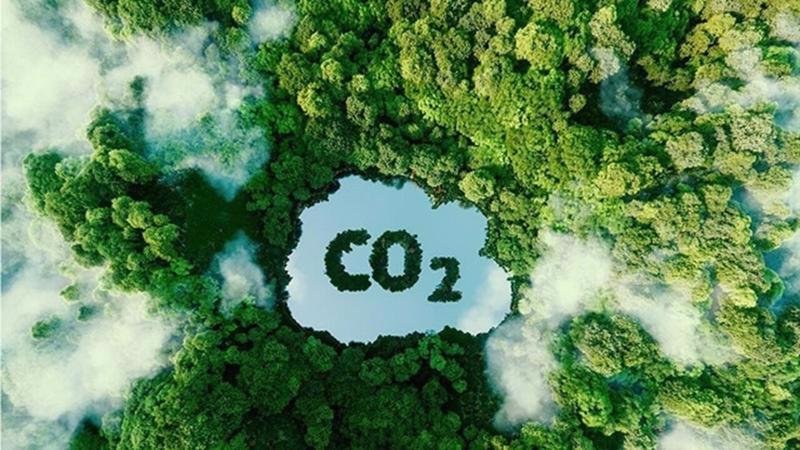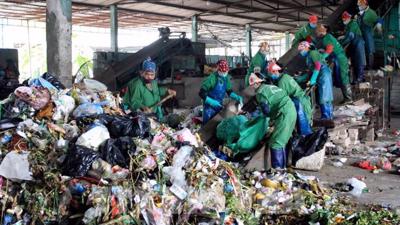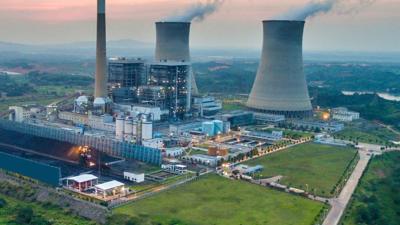Challenges to a projected carborn market
Vietnam has much to do as it works to establish a carbon credit market.

To meet global greenhouse gas emission reduction targets based on agreements reached at the COP 21 and COP 26 meetings, one key strategy proposed by the UN is the creation of carbon credit markets, both globally and within individual countries. These markets would not only expedite the reduction of greenhouse gas emissions but also provide crucial financial resources, particularly for developing countries.
With the 2025 pilot launch of a carbon credit trading platform approaching, however, Vietnam still faces numerous challenges in establishing its own market.
Promising endeavor
According to a World Bank annual report entitled “State and Trends of Carbon Pricing 2024”, global revenue from carbon pricing, including carbon taxes and emissions trading systems (ETS), reached $104 billion in 2023, up from $95 billion the previous year.
Decree No. 06/2022/ND-CP on greenhouse gas (GHG) emissions reduction and ozone layer protection was issued in Vietnam on January 7, 2022, to prepare for a domestic carbon trading market. Under the specified plan, Vietnam is to develop a legal framework for carbon credit transactions and operating rules for a carbon trading platform by 2027. A supervising body will also be established to implement a trial of the platform in 2025 and put it into official operation in 2028.
Vietnam is also preparing to introduce a domestic ETS and a national carbon credit program by 2025, targeting high-emission sectors such as cement production, steel, and transportation.
According to experts, with its natural advantages and a variety of ongoing and planned green transition projects, Vietnam has significant potential to develop a domestic carbon credit market and engage in the international carbon market. Revenue from carbon credit sales is seen as a vital financial resource, supporting the budgetary needs of both the State and local governments.
The Vietnam Administration of Forestry (VNFOREST) at the Ministry of Agriculture and Rural Development (MARD) has said that Vietnam could generate up to $300 million annually by selling 57 million carbon credits on the global market, specifically in the agriculture and forestry sectors, which is equivalent to 57 million tons of CO2 .
In 2023, Vietnam became the first country in the East Asia-Pacific region to receive a payment of $51.5 million from selling 10.3 million forest carbon credits. Among the 60 countries and territories capable of selling carbon credits, Vietnam ranks in the top 15 and is expected to further develop this promising endeavor in the future.
A report from MARD’s Climate Change Department noted that Vietnam currently ranks fourth in the world in the number of projects being implemented under the Clean Development Mechanism (CDM), with 258 projects approved by the CDM Executive Board and 13 CDM program activities, potentially reducing nearly 140 million tons of CO2 equivalent over the credit period. Of these, 17 projects under the Gold Standard have issued over 3 million credits internationally, while 24 projects under the Verified Carbon Standard (VCS) have issued more than 600,000 credits.
Obstacles to address
While Vietnam holds significant potential to benefit from the carbon credit trade, experts also believe the country still faces several challenges in achieving the government’s objectives for establishing a carbon market.
Dr. Ha Duy Ngoc, a member of the Vietnam Institute of Economics, highlighted that the primary challenge is related to policy. Vietnam lags significantly behind leading countries and regions in green transition, such as South Korea, China, Japan, and the EU, particularly in developing supportive policies and effectively implementing a carbon market. The existing policy framework only covers basic aspects like assigning tasks for market formation and defining market components, leading to practical challenges in execution.
The second hurdle is funding, especially costs associated with verifying carbon credits. Dr. Vo Tri Thanh, Director of the Institute for Brand and Competitiveness Strategy (BCSI), explained that “Vietnam currently lacks intermediary organizations capable of carrying out the verification process and issuing credits to the market. Without these entities, the costs associated with Vietnam’s carbon market will be very high.”
Another significant challenge is the lack of necessary technology. Vietnam struggles with technology even for simpler projects that generate carbon credits, such as building wind or solar farms. According to Dr. Ngoc, it relies heavily on imported technology for renewable energy projects and encounters difficulties in maintenance and repairs. It currently lacks the capability to implement any projects using advanced technologies like Direct Air Capture (DAC).
Financial sources
Dr. Tran Dai Nghia, Director of the Institute of Strategy and Policy on Natural Resources and Environment at the Institute of Policy and Strategy for Agriculture and Rural Development, believes that the primary aim of the carbon market is to create an additional financial channel to support emission reduction commitments, not to develop it as a new economic sector. Pursuing carbon credits as an investment or brokerage opportunity would be misguided.
“Carbon credits are intangible and time-sensitive products,” he explained. “If they aren’t sold within a certain timeframe, they lose their value. Therefore, by adopting low-emission practices and using technology to track carbon footprints, Vietnam can certify its products as low-carbon. If done correctly, when the EU implements the Carbon Border Adjustment Mechanism (CBAM), our products can demonstrate compliance with low-carbon standards, avoiding additional taxes.”
There are three main financial sources for carbon credits based on forestry outcomes: result-based payments (such as from donors), the voluntary carbon market, and the compliance carbon market, each of which has its own characteristics.
Vietnam mainly participates in the voluntary carbon market, which is the most accessible but comes with a limited evaluation period. If credits aren’t sold within this timeframe, their value resets to zero. Unlike the compliance market, which doesn’t require quota adjustments, the voluntary market adjusts quotas annually. Many countries, including Vietnam, have gradually increased their quotas as a way of demonstrating responsibility in their Nationally Determined Contributions (NDCs).
It is currently unable to participate in the compliance market, even though it is the primary trading market for many countries through specific transactions. Dr. Nghia pointed out that this has led to some misunderstanding among stakeholders. In 2023, Vietnam sold over 10 million credits at $5 per credit; a price considered low compared to the compliance market. “However, Vietnam cannot participate in this market without bilateral agreements,” he emphasized.
He further explained that to sell carbon credits in the voluntary market, a country must produce surplus carbon reductions beyond its NDC commitments. The key issue in participating in the carbon credit market is the ability to price carbon. While there are three assessment systems internationally, Vietnam can only utilize two: the quota exchange system and the carbon credit mechanism.
The government has instructed the Ministry of Finance, the Ministry of Natural Resources and Environment, and other relevant ministries and agencies to develop Vietnam’s carbon market. However, the current roadmap only extends to 2028 and is focused on the domestic market. The international trading market, which would operate similarly to the stock market, remains underdeveloped.
Proposed solutions
Experts have proposed several solutions to ensure the successful operation of the carbon credit market to contribute to Vietnam’s green transition and sustainable development.
Firstly, a comprehensive legal framework should be established for its carbon credit market, which would clearly define ownership, pricing, operations, management, and dispute resolution.
Secondly, an integrated, synchronized, and clear governance system needs to be developed to closely monitor the growth and operations of the carbon market. Past incidents in places like Brazil and Taiwan (China) involving fraud and the sale of fake or “dirty” carbon credits have damaged the credibility of carbon markets both locally and globally. Therefore, a robust and synchronized management and monitoring system is essential to regulate Vietnam’s carbon credit market and build trust with international buyers.
Thirdly, specialized intermediary entities should be established to operate within the carbon credit market. These entities would handle tasks such as verifying carbon credits and listing them on domestic and international exchanges. Having domestic intermediaries would significantly reduce the costs of relying on foreign companies and experts to facilitate carbon credit sales.
Lastly, the broad application of the Land Use, Land Use Change, and Forestry (LULUCF) sector is crucial. LULUCF plays a vital role in meeting net-zero commitments through activities that reduce emissions and absorb carbon from agricultural land, wetlands, and forests.
According to an announcement from MARD in 2023, Vietnam has more than 14.8 million ha of forest area but is yet to broadly introduce afforestation as an economic sector. Afforestation can absorb CO2 and create carbon credits that Vietnam could trade domestically or internationally under the REDD+ (Reducing Emissions from Deforestation and Forest Degradation in developing countries) mechanism.
Professor Le Anh Tuan, Chairman of the University Council at Hanoi University of Science and Technology, suggested that promoting LULUCF could also support the development of the biomass energy sector, providing another source of CO2 emission reductions that could contribute to the carbon credit market.







![[Interactive]: Economic overview - April 2025](https://media.vneconomy.vn/400x225/images/upload/2025/05/06/5a245778-67b1-4874-a8dc-21f8cfed62a6.png)